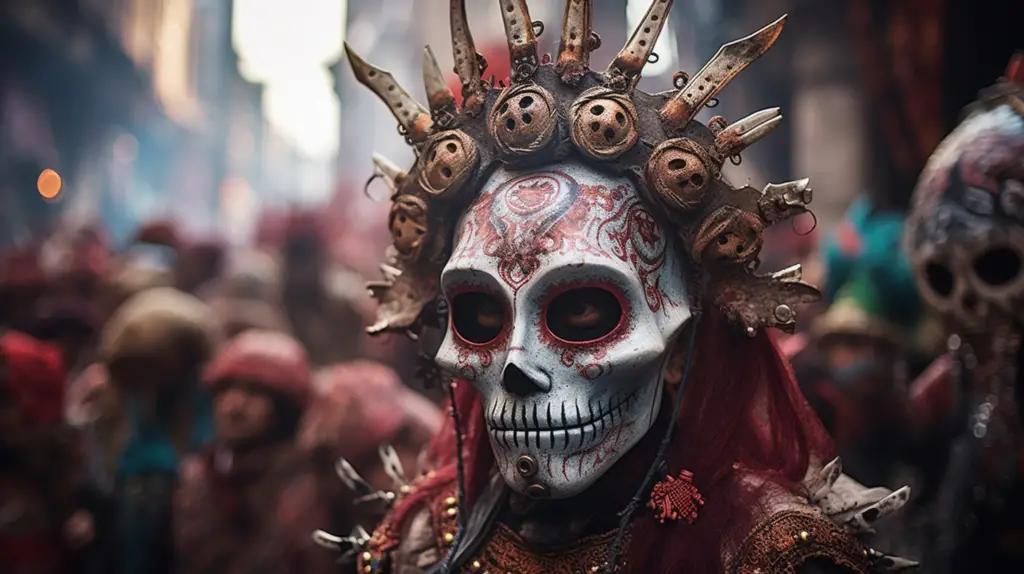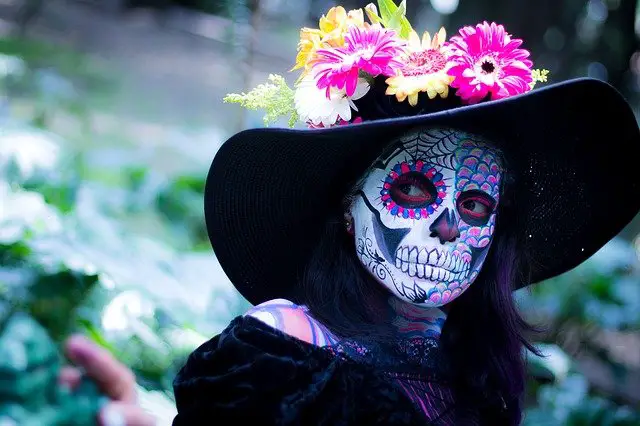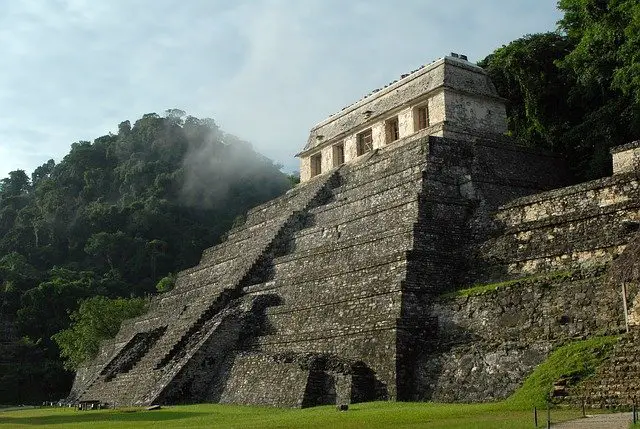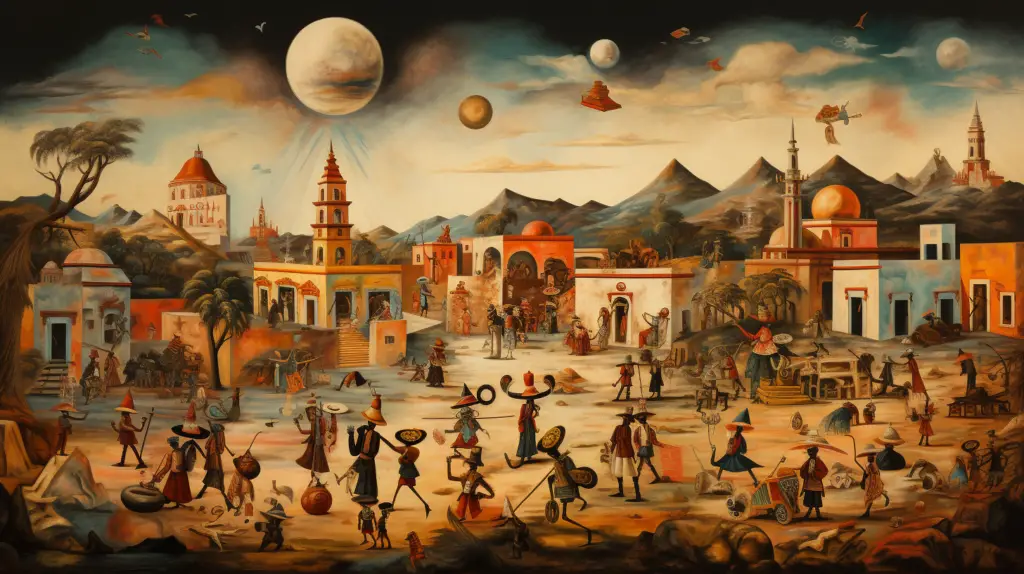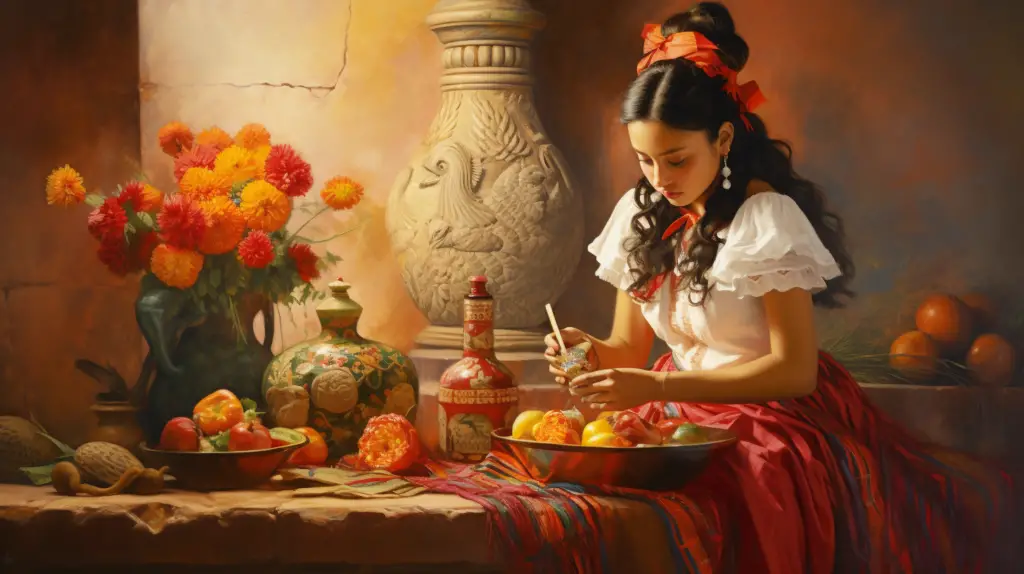When you think of Mexico, you probably think of beaches and parties, or you think of drugs and drug cartels. But, Mexico is much more than parties and drugs; it’s a country rich in history, culture, and amazing people. From its rich history to its diverse landscapes and vibrant culture, Mexico is a country full of surprises. Whether you’re a seasoned traveler, a history buff, or someone just curious about different cultures, there are countless things to learn about this fascinating country.
Here, we’ll delve into 100 interesting facts about Mexico that showcase its uniqueness and depth.
100 interesting facts about Mexico
Below you will the first 20 interesting facts about Mexico that I bet you didn’t know.
1. Mexico is not Mexico!
Mexico is officially called Estados Unidos Mexicanos (United Mexican States). It’s just been anglicized for easy consumption by foreigners like you and me.
2. Mexico City only just became Mexico City!
There probably aren’t that many cities you know when you think of Mexico, but Mexico City is likely one of them. You may even know that Mexico City is the capital. But that hasn’t always been the case. For 196 years, it was called Federal District. It wasn’t until 2016 that Mexico City finally became Mexico City.
3. Mexico City is Sinking!
Mexico City was built on top of what was Lake Texcoco, and every year it sinks further down into the lake bed. So for the past two decades, the city has dropped up to 40 cm every year in downtown Mexico City with no current options for stopping the sinking.
The sinking is not uniform, so some city areas are below the lake bed, and some are still above it, leading to other issues such as significant infrastructure damage and flooding.
4. Mexican Spanish is Unique from Spain Spanish
Mexico’s most spoken language is Spanish, but it differs significantly from what is spoken in Spain. While the two countries can understand each other, Mexican Spanish has been separated from Spain for hundreds of years. This means the pronunciation has changed, some words are no longer used, and brand new words and ways of speaking have been introduced that are uniquely Mexican.
5. Mexico has 69 recognized languages!
You’re probably well aware that Mexicans speak Spanish. But did you know that there are 68 official national languages recognized and spoken in Mexico? Not to mention the new languages that immigrants from other countries have brought.
Most Mexicans speak only Spanish. However, some indigenous peoples ONLY speak their languages, such as Nahuatl, Yucatec Maya, or Tzeltal.
READ MORE: 50 Fascinating Facts You Didn’t Know About JAPAN
6. The meteorite that wiped out the dinosaurs hit Mexico.
You probably know that a meteorite hit Earth and wiped out the dinosaurs, along with 75% of the plant and animal species.
Did you know that the meteorite hit Mexico and caused all of this?
It’s thought it caused tsunamis as high as 1.5 km that reached every coastline in the world. The shockwaves would have triggered global earthquakes and volcanic eruptions. The dust and particles caused by the impact would have covered the Earth for years or decades later, suffocating plants and depriving animals of food.
7. Mexico has the largest pyramid in the world!
Egypt isn’t the only country with pyramids, and it doesn’t even have the biggest. Mexico has the largest pyramid in the world at 400 x 400 meters and a total volume of 4.45 million cubic meters, almost double the Great Pyramid of Giza in Egypt.
The Great Pyramid of Cholula is almost entirely underground, so it isn’t apparent how big it is until you enter.
8. Mexico is fighting to be the fattest country in the world.
Up until the late 20th century, Mexico had a malnutrition problem. However, since the introduction of cheaper, more processed, and more readily available foods, that has flipped around, and obesity has become a significant problem for Mexico.
Mexico now contends to be the most obese country in the world, currently beating the United States.
9. Mexico isn’t a third-world country, or is it?
Technically, Mexico is a third-world country based on the criteria set during the Cold War. First-world countries aligned with NATO and the United States, second-world countries were those who aligned with Russia, and third-world countries were whoever was left.
However, these days when you think of third-world countries, you think of poverty and instability. Mexico is not poor, and it is not unstable. Mexico has the 15th largest economy in the world as ranked by GDP. To be fair, however, the USA ranks #1 in GDP.
10. Mexico has 35 UNESCO World Heritage Sites.
A world heritage site is a place or thing with legal protection. It may have cultural, historical, or scientific significance, or just something amazing about it that the world thinks is worth protecting.
Mexico has 35 of these! There are 27 cultural sites, six natural sites, and two mixed sites.
Some examples of these are ancient cities, rock paintings from disappeared people, whale sanctuaries, and much more.
You can find a complete list of them here.
LEARN MORE: 20 Interesting Facts About Vegans and Veganism
11. You’re not supposed to put toilet paper in the toilet!
It may be incredibly shocking, but you can’t flush your toilet paper down the toilet in Mexico. Instead, you’re almost always supposed to put it in a bin next to the toilet. This practice may be slightly different in resorts, but you may need to check if you’re outside the resort zone or visiting someone’s home.
The reason for this is that a large part of Mexico’s water and sewer system is not designed to handle paper, so you could cause floods, blockages, or issues in the septic tanks.
12. Mexico has women-only sections on public transport.
Mexico City has women-only buses and taxis available explicitly. The reason for this is to discourage sexual harassment and inappropriate touching by men of women on crowded Mexico City public transport.
13. The First Printing Press in North America was in Mexico
While the printing press wasn’t invented in Mexico, the first operating printing press in North America was delivered to and used in Mexico City in 1539 by publisher Juan Cromberger. However, it wasn’t until 1638 that America started operating a printing press.
14. Mexican children don’t receive presents on Christmas Day.
Mexican children may realistically get some presents on Christmas Day; however, this is not considered a real Mexican holiday and just something that has been taken from America. Instead, children will receive most of their gifts on January 6th, which is Three Kings Day. It isn’t Santa that brings the gifts; it is the Magi, more commonly known, The Three Wise Men, who visited Jesus and brought gifts on his birth.
15. Mexico has the oldest university in North America.
When people think of North American universities, they often think of America and may even know that Harvard was founded in 1636 in Massachusetts.
However, Mexico has the oldest university, The Royal and Pontifical University of Mexico, founded in 1551. It has gone through some changes and is now called The National Autonomous University of Mexico. Its main campus in Mexico City is even a UNESCO World Heritage Site.
READ MORE: 25 Interesting Facts About Berkshire Botanical Garden
16. Mexico has the world’s smallest volcano.
Mexico has thousands of volcanos. Cuexcomate in Puebla, Mexico, is “The World’s Smallest Volcano,” and you can walk inside it. It is only 13 meters tall and 23 meters around.
Technically this is not a volcano but an inactive geyser but let’s not ruin the fun. An additional interesting fact about Cuexcomate, it’s thought to have been used for human sacrifices.
17. Jaguars are running around in Mexico.
You may not think there are, but jaguars are running around North America. Not commonly seen or thought of in America, but there are many roaming around Mexico. They are relatively small at 50 kg and are similar in size to cougars.
18. A Mexican created the world’s first birth control.
You may not give it much thought, but contraceptive pills are relatively new. Luis E. Miramontes was the first person to synthesize what would ultimately be used in contraceptive pills, and he did this in 1951.
So without Luis, the world’s population may have been even larger!
19. Color TV was invented in Mexico.
Color TV is absolutely taken for granted now but is relatively new. Guillermo González Camarena invented a device that could transmit color signals. He first tested this in 1946.
Color TV was introduced to the American public in 1954, but limited programming and cost did not outsell black and white TVs until the early 1970s.
20. There are 59 types of corn in Mexico.
Do you like corn? You’ve probably only ever eaten one type of corn, which is sweet corn. However, Mexico has 59 different types of corn, such as dent corn and flint corn.
Let’s continue with 80 more interesting facts about Mexico!
- Ancient Civilizations: Mexico was home to ancient civilizations like the Maya, Aztecs, and Olmecs.
- World’s Largest Pyramid: The Great Pyramid of Cholula, located in Puebla, is the largest pyramid in terms of volume.
- Chocolate Origins: The Aztecs introduced the world to chocolate, and they called it “xocolatl”.
- Day of the Dead: Celebrated on November 1 and 2, the Day of the Dead (Día de los Muertos) is a time to remember and honor deceased loved ones.
- Rich Biodiversity: Mexico is one of the 17 megadiverse countries in the world, with thousands of different species.
- Longest Coastline: Mexico has the world’s 9th longest coastline, spanning over 9,330 kilometers.
- Color Television: Guillermo González Camarena, a Mexican, invented the first color transmission system for television.
- National Anthem: Mexico’s national anthem was chosen through a national anthem contest in 1854.
- Chihuahua: The world’s smallest dog breed, the Chihuahua, is named after a Mexican state.
- World’s First Birth Control: Indigenous people in Mexico used wild yam as the world’s first birth control.
READ MORE: 25 Interesting Facts About “Fat Man”, the Atomic Bomb Dropped on Nagasaki - Mexican Cuisines: Mexico’s cuisine, including tacos, tamales, and tequila, has been declared a UNESCO Intangible Cultural Heritage of Humanity.
- Popocatépetl and Iztaccíhuatl: These two volcanic peaks, representing a warrior and a sleeping woman, are legendary lovers in Mexican folklore.
- Poinsettias: Native to Mexico, poinsettias are popular worldwide during Christmas.
- World’s Smallest Volcano: Cuexcomate, located in Puebla, is considered the world’s smallest volcano at 43 feet tall.
- Mariachi: Originating in Jalisco, mariachi music is an essential part of Mexican culture.
- Cinco de Mayo: Contrary to popular belief, Cinco de Mayo is not Mexico’s Independence Day but celebrates the victory at the Battle of Puebla.
- Largest Spanish-speaking Country: Mexico has the most Spanish speakers globally, with over 120 million people.
- First Printing Press: The first printing press in North America was used in Mexico City in 1539.
- Mexico’s Capital: Mexico City was built on the ruins of the Aztec capital, Tenochtitlan.
- Vanilla: Native to Mexico, vanilla was used by the Aztecs long before it became popular worldwide.
- Silver Production: Mexico is the world’s largest producer of silver.
- Lucha Libre: Mexican wrestling, characterized by colorful masks, is a popular sport and entertainment form.
- The Sonora Desert: It is one of the largest and hottest deserts in North America.
- Xochimilco Canals: These “floating gardens” are a UNESCO World Heritage site in Mexico City.
- World’s Largest Bullring: The Plaza de Toros México in Mexico City can hold 41,262 spectators.
READ MORE: 25 Shocking Facts about the 2008 Sichuan Earthquake - Oldest University: The Universidad Nacional Autónoma de México, founded in 1551, is the oldest university in North America.
- Monarch Butterfly Migration: Millions of monarch butterflies travel over 2,500 miles from North America to Mexico every winter.
- Caesar Salad Origin: The Caesar Salad was invented in Tijuana, Mexico.
- Agave Plants: Tequila is made from the blue agave plant, native to Mexico.
- Golden Age of Mexican Cinema: The 1940s and 1950s are considered the Golden Age of Mexican cinema, with stars like Dolores del Río and María Félix.
- Reserve Currency: The oldest currency in North America, the Mexican Peso, once served as an official currency for places like the USA.
- Meteor Crater: The Chicxulub crater in Yucatán is believed to be the impact site of the asteroid that caused the extinction of the dinosaurs.
- Cactus: The national coat of arms of Mexico features an eagle perched on a cactus, devouring a snake.
- Voladores Ritual: The “Dance of the Flyers” is a pre-Hispanic ceremony in which performers swing from a pole, representing the descent of the gods.
- Guelaguetza Festival: This Oaxacan festival is a celebration of indigenous cultural heritage.
- Jaguar Reserve: Mexico is home to the largest jaguar reserve in the world.
- Whale Sanctuary: Baja California hosts one of the world’s most important gray whale breeding sites.
- Chichen Itza Equinox: During the spring and autumn equinoxes, the Kukulkan Pyramid at Chichen Itza showcases a serpent shadow.
- Tunnel Systems: Puebla city has underground tunnels that are more than 500 years old.
- La Quebrada Cliff Divers: In Acapulco, divers jump from cliffs that are up to 35 meters high.
- Mexican Wine: Baja California’s Valle de Guadalupe is Mexico’s premier wine region.
- Cenotes: These natural sinkholes, primarily found in the Yucatán Peninsula, were sacred to the ancient Maya.
- Zapotec Language: The indigenous Zapotec language in Oaxaca has no gender-specific pronouns.
- Mexican Siesta: Contrary to the stereotype, the siesta (afternoon nap) is not widely practiced in modern Mexico.
- Children’s Day: Mexico celebrates Día del Niño (Children’s Day) on April 30th every year.
- Mazatlán Carnival: This is one of the oldest and most important carnivals in Mexico.
- Mexican Hat Dance: The Jarabe Tapatío, also known as the Mexican Hat Dance, is the national dance of Mexico.
- Tulum Ruins: These are the only Mayan ruins located along the coastline.
- Alebrijes: Colorful, fantastical creatures crafted from paper mâché or wood are an important part of Oaxacan folk art.
- Underwater Museum: The Cancún Underwater Museum has over 500 sculptures submerged in the Caribbean Sea.
READ MORE: 25 Interesting Facts about “Little Boy”, the Atomic Bomb Dropped on Hiroshima - Mexican Nobel Laureates: Two Mexicans have won Nobel Prizes – Alfonso García Robles in Peace (1982) and Octavio Paz in Literature (1990).
- Ajolote: The axolotl, a unique amphibian known to regenerate its limbs, is native to the lakes of Mexico City.
- Mexican Muralism: Artists like Diego Rivera, José Clemente Orozco, and David Alfaro Siqueiros contributed to the Mexican muralism movement, painting significant murals that tell stories of Mexico’s history and identity.
- First Public Library: The first public library in the Americas was established in Mexico in 1646.
- Mexican Spanish: Mexican Spanish has indigenous influences, incorporating words from Nahuatl and other native languages.
- Sombrero: The wide-brimmed hat, known as a sombrero, originates from Mexico and was designed to protect wearers from the sun.
- Tamaulipas Caves: Some caves in Tamaulipas have drawings that date back to the pre-Hispanic period.
- Millionaire’s Salad: The cactus, especially the prickly pear variety, is consumed widely in Mexican cuisine and sometimes referred to as “millionaire’s salad.”
- Bacalar Lagoon: Located in Quintana Roo, this is known as the “Lagoon of Seven Colors” because of its mesmerizing blue and green hues.
- Third Gender: The Zapotec community in Oaxaca recognizes a third gender known as ‘muxes’ – individuals assigned male at birth but who identify as neither male nor female.
- Tamale Spaceships: There’s a saying in Mexico, “estar en la luna” (to be on the moon) which refers to daydreaming. It’s believed to come from the idea that when one’s tamale was undercooked, it was because the cook was daydreaming.
- Pyramid of the Sun: Located in Teotihuacán, it’s one of the largest pyramids in the world.
- Black Gold: Mexico is one of the top oil-producing countries in the world.
- Mexican Rodeo: The “Charreada” is a Mexican rodeo, and “charros” are the cowboys who participate in the event.
- Atole: This warm, thick drink made from masa (corn dough) is a traditional Mexican beverage, especially popular during the Day of the Dead and Christmas.
- Acapulco Gold: Acapulco has been historically significant for its gold and green varieties of marijuana.
- Pulque: Before the popularity of tequila, there was pulque – an alcoholic beverage made from the fermented sap of the agave plant.
- Tarantula Hawks: These large wasps have a sting that’s considered one of the most painful insect stings in the world. They are found in various parts of Mexico.
- La Catrina: The iconic skull figure, often seen during the Day of the Dead celebrations, was created by Mexican lithographer José Guadalupe Posada.
- Tláloc: The Aztec rain god, Tláloc, was worshipped in grand temples in Tenochtitlan. Children were often sacrificed to please him.
- Huichol Art: The Huichol indigenous group is known for its vibrant beadwork and yarn paintings.
- Frida Kahlo: This iconic Mexican artist is known for her surreal and symbolic self-portraits.
- Loreto: The first Spanish mission and Jesuit mission in Baja California was established in Loreto in 1697.
- La Malinche: An indigenous woman who played a pivotal role during the Spanish conquest, serving as Hernán Cortés’s interpreter and advisor.
- Peña de Bernal: Located in Querétaro, it’s one of the world’s tallest monoliths.
- Sian Ka’an: Meaning “Origin of the Sky”, this biosphere reserve in Quintana Roo is a UNESCO World Heritage site.
- Mexican Flag: The emblem in the center of the flag tells the Aztec story of Tenochtitlan’s founding, where an eagle perched on a cactus holds a snake.
- Guacamole: The name originates from the Nahuatl word “ahuacamolli”, which translates to “avocado sauce”.
- Ballet Folklórico: A combination of ballet and folk dance to represent traditional dances from different regions in Mexico.
- Taco Literacy: The cultural, social, economic, and historical importance of Mexican food, especially tacos, is so vast that there are courses in the U.S. universities focusing on “Taco Literacy”.
Top 10 questions and answers about Mexico
These questions span a range of topics, from geography and history to culture and cuisine, reflecting the rich diversity and heritage of Mexico.
- Question: What is the capital city of Mexico?
Answer: Mexico City. - Question: Which ancient civilization built the city of Teotihuacan, home to the Pyramid of the Sun and the Pyramid of the Moon?
Answer: The specific civilization remains unknown, but Teotihuacan was a major city long before the Aztecs arrived in the region. - Question: On which date is Mexico’s Independence Day celebrated?
Answer: September 16th. - Question: Which sea lies to the east of the Yucatán Peninsula?
Answer: The Caribbean Sea. - Question: What is the traditional Mexican dish made of minced meat wrapped in corn dough and steamed inside a corn husk called?
Answer: Tamale. - Question: Which famous Mexican artist painted “The Two Fridas” and is known for her self-portraits?
Answer: Frida Kahlo. - Question: Which desert, one of the largest in North America, spans parts of the United States and Mexico?
Answer: The Sonoran Desert. - Question: What is the name of the pre-Hispanic sport that is still played today, involving a heavy rubber ball and stone rings?
Answer: Ulama or the Mesoamerican ballgame. - Question: Which peninsula in Mexico is known for its Mayan ruins, beaches, and resorts like Cancún and Playa del Carmen?
Answer: The Yucatán Peninsula. - Question: From which plant is the alcoholic beverage Tequila derived?
Answer: The Blue Agave plant.
READ MORE: Miyamoto Musashi’s Grave: The Final Resting Place of the Legendary Swordsman
Top 20 Tourist Destinations in Mexico
Mexico, a land steeped in rich history and diverse culture, is among the world’s top tourist destinations. From the awe-inspiring ruins of ancient civilizations to vibrant cities and pristine beaches, there’s something for every traveler. Let’s embark on a journey through the top 20 must-visit destinations in Mexico.
- Cancún: Known globally for its stunning beaches, vibrant nightlife, and luxurious resorts, Cancún is the quintessential tropical paradise.
- Mexico City: The bustling capital offers a mix of ancient history at the Templo Mayor, world-class museums like the National Museum of Anthropology, and vibrant neighborhoods such as Coyoacán.
- Tulum: Renowned for its cliffside Mayan ruins overlooking the Caribbean Sea, Tulum combines archaeological intrigue with beachside relaxation.
- Chichen Itza: One of the New Seven Wonders of the World, this ancient Mayan city boasts the iconic pyramid of El Castillo.
- Playa del Carmen: A coastal town on the Yucatán Peninsula, it’s popular for its beaches, coral reefs, and vibrant 5th Avenue filled with shops, restaurants, and nightlife.
- Teotihuacán: Home to the enormous Pyramids of the Sun and the Moon, this ancient city offers a window into Mesoamerican history.
- Guanajuato: A UNESCO World Heritage site, this colorful city is known for its historic center, mummy museum, and the Cervantino arts festival.
- Oaxaca: Renowned for its indigenous cultures, culinary delights, and the stunning Monte Albán archaeological site.
- Cozumel: This island is a haven for scuba divers and snorkelers, with crystal-clear waters and vibrant coral reefs.
- Copper Canyon: Larger and deeper than the Grand Canyon, visitors can explore it via the Chihuahua al Pacifico Railway, offering breathtaking vistas.
- San Miguel de Allende: An artistic town known for its baroque Spanish architecture, thriving arts scene, and cultural festivals.
- Palenque: Set amidst the Chiapas jungle, Palenque’s ancient ruins provide insights into the Mayan civilization.
- Isla Mujeres: A serene alternative to Cancún, this island is perfect for snorkeling, relaxing on white-sand beaches, and visiting the turtle sanctuary.
- Los Cabos: Located on the Baja California Peninsula, it’s famed for its beaches, water-based activities, and the striking Arch of Cabo San Lucas.
- Mazatlán: Known as the “Pearl of the Pacific”, it boasts a beautiful waterfront promenade, historic sites, and vibrant Golden Zone.
- Puerto Vallarta: Nestled between the Bay of Banderas and the Sierra Madre Mountains, it offers beaches, water sports, and a famous seafront promenade.
- Puebla: With a beautifully preserved colonial center, Puebla is also famous for its culinary heritage, including mole poblano.
- Taxco: Known as Mexico’s silver capital, its winding streets, silver shops, and Santa Prisca church are a must-visit.
- Acapulco: Once a playground for Hollywood’s elite, Acapulco offers stunning bay views, cliff divers at La Quebrada, and a lively nightlife.
- Merida: The Yucatán capital boasts colonial charm, Mayan heritage, and is a gateway to many nearby archaeological sites.
Whether you’re seeking adventure, relaxation, gastronomic delights, or historical exploration, Mexico’s diverse destinations cater to all. Each region provides a unique blend of experiences, ensuring that every journey is memorable. So, pack your bags and explore the beauty, warmth, and allure of Mexico!
READ MORE: 25 Interesting Facts About Burkina Faso
Top 10 Famous Mexicans in Mexico’s History
Mexico, a country with a rich cultural tapestry, has been shaped and influenced by many notable figures throughout its history. Here are ten of the most famous Mexicans who have left indelible marks on their nation and the world.
- Hernán Cortés (1485-1547)
The Spanish conquistador who led the expedition leading to the downfall of the Aztec Empire, Cortés’ actions paved the way for Spain’s colonization of Mexico and the larger New World. - Benito Juárez (1806-1872)
Often dubbed the “Benemerito de las Americas”, Juárez, an indigenous Zapotec, served as Mexico’s president for five terms. He championed the separation of church and state and fought against foreign intervention. - Frida Kahlo (1907-1954)
An iconic artist known for her distinctive self-portraits, Kahlo’s works address themes of identity, post-colonialism, gender, and race, making her an enduring figure in global art and feminist circles. - Pancho Villa (1878-1923)
A key leader during the Mexican Revolution, Villa’s combination of guerrilla tactics, daring raids, and advocacy for the poor made him both a national hero and an international figure. - Emiliano Zapata (1879-1919)
A leader of the agrarian rights movement during the Mexican Revolution, Zapata championed land reforms and the rights of peasants, and is immortalized by the saying, “Tierra y Libertad” (Land and Liberty). - Octavio Paz (1914-1998)
A Nobel laureate in Literature (1990), Paz’s works provide insights into Mexican identity, politics, and culture. His acclaimed book “The Labyrinth of Solitude” delves into the Mexican psyche. - Carlos Slim (1940-present)
Often listed among the world’s richest individuals, Slim’s influence in telecommunications, media, and various other industries has made him a prominent figure in Mexico’s modern economic landscape. - Sor Juana Inez de la Cruz (1648-1695)
A nun, scholar, and writer, Sor Juana was a staunch advocate for women’s education. Her writings, both poetic and analytical, challenged the societal norms of her time. - José María Morelos (1765-1815)
A revolutionary leader and Roman Catholic priest, Morelos was a pivotal figure in Mexico’s fight for independence from Spain. He championed social reforms and the rights of Mexico’s indigenous and mestizo populations. - Mario Molina (1943-2020)
A chemist and environmental advocate, Molina shared the Nobel Prize in Chemistry in 1995 for his work on the effects of man-made compounds on the ozone layer. His research has significantly impacted global environmental policies.
While these figures represent just a fraction of Mexico’s vast historical canvas, their contributions to politics, art, science, and society have been instrumental in shaping the nation’s identity. Their legacies continue to inspire generations both within Mexico and beyond.
READ MORE: 25 Interesting Facts about Lake Lanier
Top 10 Movies About Mexico
Mexico, with its vibrant culture, rich history, and varied landscapes, has been the backdrop and subject of numerous films. From iconic classics to contemporary masterpieces, here are ten movies that either beautifully capture Mexico’s essence or tell riveting tales set within its borders:
- “Amores Perros” (2000)
Directed by Alejandro González Iñárritu, this gripping anthology film delves deep into the interlinked lives of its characters in Mexico City, showcasing urban struggles and the complexity of human relationships. - “Y Tu Mamá También” (2001)
A coming-of-age tale by Alfonso Cuarón, this film masterfully interweaves a road trip narrative with political and social commentary about Mexico at the turn of the millennium. - “El Mariachi” (1992)
Robert Rodriguez’s debut feature, this low-budget action-packed film tells the tale of a traveling musician mistaken for a fearsome hitman in a Mexican town. It’s raw, energetic, and became a cult classic. - “Like Water for Chocolate” (1992)
Based on Laura Esquivel’s novel, this romantic drama directed by Alfonso Arau integrates magical realism and Mexican culinary traditions to depict a tale of forbidden love. - “The Night of the Iguana” (1964)
Directed by John Huston and based on Tennessee Williams’ play, the film, set in a coastal Mexican village, explores the emotional turmoil of its characters, featuring an ensemble cast led by Richard Burton. - “Desperado” (1995)
Another entry from Robert Rodriguez, this action-packed sequel to “El Mariachi” stars Antonio Banderas as the guitar-playing hero seeking vengeance against a drug lord. - “Coco” (2017)
A delightful Pixar animation, “Coco” delves into Mexico’s Day of the Dead traditions. It’s a heartwarming tale of family, memory, and the importance of cultural heritage. - “Babel” (2006)
Another masterpiece from Iñárritu, “Babel” interlinks stories from various countries, including a poignant subplot set in Mexico, emphasizing global interconnectedness and miscommunication. - “Frida” (2002)
Directed by Julie Taymor and starring Salma Hayek, this biopic chronicles the life of iconic Mexican artist Frida Kahlo, her tumultuous relationship with Diego Rivera, and her enduring spirit in the face of adversity. - “Sin Nombre” (2009)
Directed by Cary Fukunaga, this harrowing drama follows a young Honduran girl and a Mexican gang member as they embark on a perilous journey to the U.S., illuminating the challenges faced by migrants.
Each of these films, in their unique way, offers viewers a glimpse into the diverse tapestry of Mexican life, culture, and history. Whether through the lens of romance, action, drama, or animation, Mexico’s multi-faceted narratives continue to enchant audiences worldwide.
READ MORE: 25 Interesting Facts About The Egyptian Pyramids
Final Thoughts
With 150 interesting facts about Mexico, some serious, some silly, and some just interesting, I hope you have a broader understanding of Mexico and an interest in learning more about the culture, people, and places. From ancient civilizations and natural wonders to cultural celebrations and innovative contributions, Mexico is indeed a land of marvels.
Mexico is a great place to visit, with a variety of different options depending on what you want to do and what level of comfort you want. Mexico’s traditions, landscapes, and stories are as varied as its geography. From its bustling cities to its quiet, sacred temples, every corner has a tale to tell. The more one delves into this nation’s history and culture, the more there is to discover and cherish.
If you never visit Mexico, then I hope at least you found some of these facts interesting!
